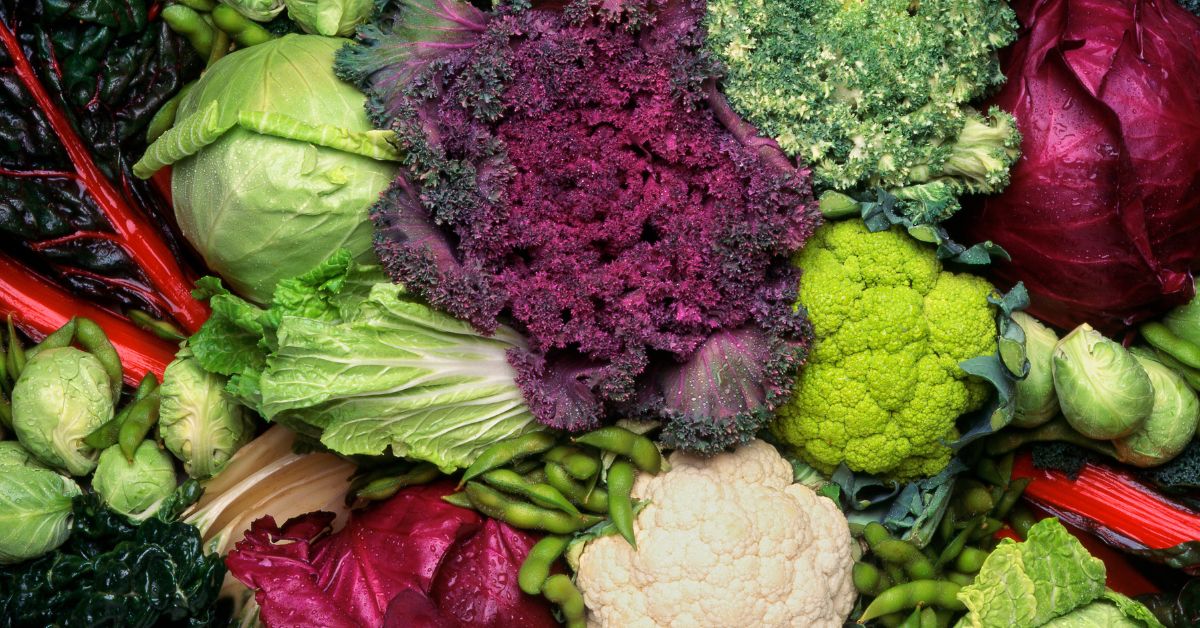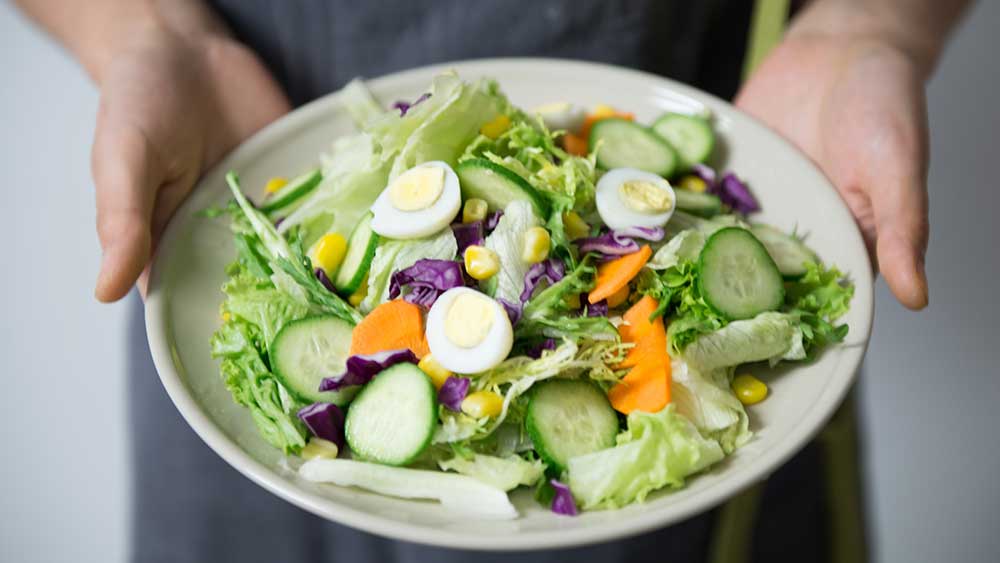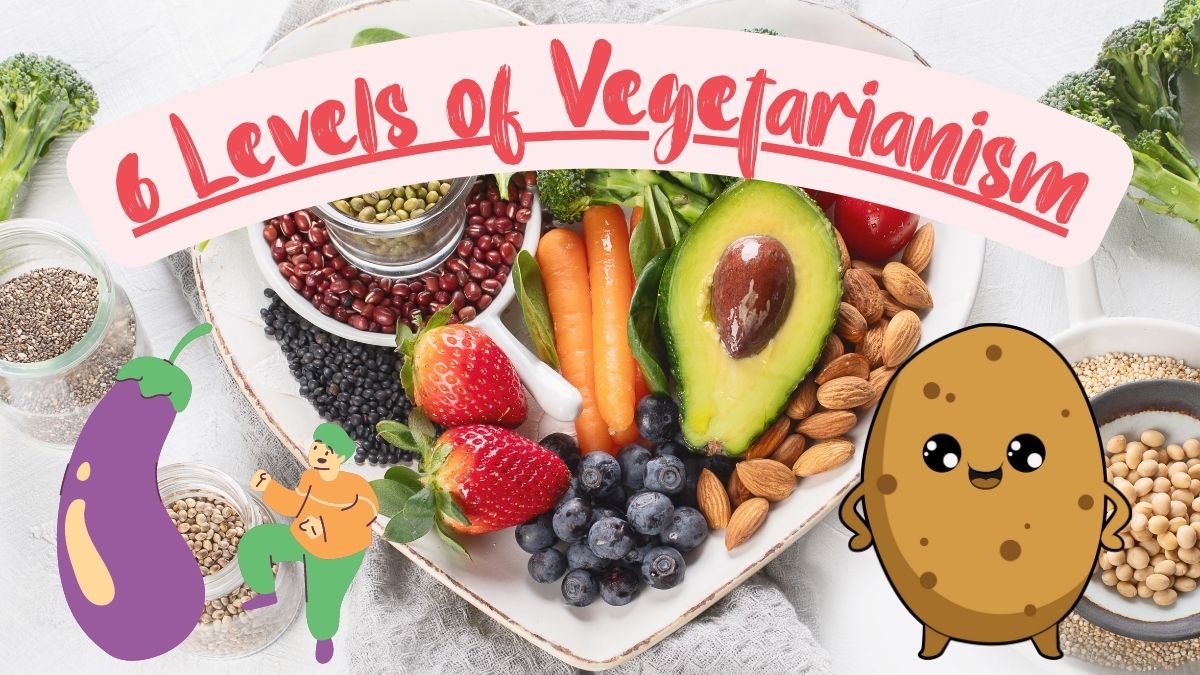Cruciferous vegetables, also called Brassica Vegetables, include Mustard Greens, Mizuna, Tatsoi, Daikon, Horseradish, Radishes, Rutabaga, Collard Greens, Bok Choy, Turnip Greens, Arugula, Broccoli, Cauliflower, Brussels Sprouts, Cabbage, Watercress, Napa or Chinese Cabbage, Turnips, Kohlrabi, and Kale. We should ensure to include a variety of these vegetables (at least three of them) each week. They help our bodies fight cancer and are nutrient-dense.
Booming with vitamins including vitamin C and folate, minerals including potassium and selenium, and also contain fiber, chlorophyll, as well as antioxidants, flavonoids and phytochemicals, carotenoids, lignans, phytosterols, isothiocyanates, sulforaphane and glucosinolates (the sulfur compound that makes these veggies zing), and indole-3-carbinol, these are nutritious superfoods!
Isothiocyanates encourage our bodies to speed up the process of degrading possible carcinogens. As a result, they stop the normal cells in our body from transforming into malignant ones. They have been linked to the metabolization of toxins derived from smoking and a reduction in the incidence of malignancies caused by tobacco use.
Only cruciferous vegetables contain the nutrient isothiocyanates, which has been associated with a decrease in lung cancer.
Even nonsmokers benefit since second-hand smoke is so prevalent.
Cruciferous Vegetables to Start Growing And Eating Today
Cruciferous vegetables include the highest concentrations of sulforaphane, one of the isothiocyanates found in cruciferous vegetables, as well as indole-3-carbinol, which has been connected with a reduced risk of many malignancies, including breast, prostate, cervical, and colon cancer. It has been shown to prevent cancer from developing as well as lessen the size of existing tumors and slow their progression.
Cruciferous vegetables lower blood levels of homocysteine, which in turn lowers the chance of developing cardiovascular disease.
1. Broccoli

Tired of steamed Broccoli? We love it sautéed in olive oil, garlic, and toasted pine nuts. Blanch it first (drop it in boiling water for a couple of minutes). Broccoli can be eaten raw (though blanching/steaming enhances their color and makes it easier to eat), steamed, sautéed, and stir-fried. Stalks take longer to cook than florets, so get them going earlier.
Broccoli is part of the cabbage family.
Creamy Broccoli soup is a good one in our house and is easy to make. Start by sautéing garlic and onions in olive oil. I like adding red pepper flakes when I sauté the onions to add a little heat to them.
Cut up the broccoli by separating the stalks from the florets and cutting the stalks in half lengthwise. Add the stalks and sauté. Then add a cut-up potato or two. Potato thickens the soup nicely. Add chicken stock or water (I find that water is fine as the stalks will flavor it nicely) and simmer gently until all the flavor is out of the stalks and they are soft.
Add the florets on top of the soup and let them steam until done; this doesn’t take very long. Make sure you don’t overcook them, as this is what will give your soup and gorgeous green color.
Remove the stalks (you can actually scoop out the insides and use it or peel the stalks before adding them to the sauté at the beginning, in which case you won’t need to remove them. They need to be peeled, or the soup will be stringy and not have a nice smooth texture.)
Puree with a handheld blender; you can add milk or a little cream for proper consistency or add a little water if you need it. Add spices (salt and pepper, a scrape of fresh nutmeg). I like to add a handful of shredded cheddar cheese in there, too, and stir it up; I find that the cheese gives it a nice color, flavor, and texture.
Broccoli bunches include stalks. When young, these stalks and the skins are tender and can be eaten, but in soups or as they mature, they get stringy, and it’s best to peel the stalks before preparing simply.
The stalks are just as nutritious as the crowns, and so are the leaves, but some people discard the stems.
If you are that person, broccoli crowns are for you! Broccoli crowns are just the head of the broccoli without the stalks. Sometimes, when you see these being sold, they can be older than the broccoli with stalks, so buyer beware.
Broccoli slaw can sometimes be found in your local grocery store. This is shredded broccoli and typically contains some carrots too. May or may not also include cabbage, especially red cabbage, for added color. You may create a healthy slaw with it or include it in a stir-fry salad. Both options are delicious!
Even more nutritious than broccoli itself, broccoli sprouts provide roughly fifty times the protection against cancer as their parent vegetable. They contribute to a reduction in the dangers posed by hypertension, which may include an increased risk of cardiovascular disease and stroke. These sprouts are high in glucoraphanin, which works to boost our immune defense system. Add these to sandwiches or salads.
Broccoflower is a cross between Broccoli and Cauliflower. It looks like a lime green Cauliflower with a taste that leans toward Cauliflower but is sweeter and has a texture like broccoli. It tends to be more precious than Broccoli or Cauliflower. Also called Green Cauliflower.
Purple Broccoli is usually smaller than traditional broccoli. Instead of being blue-green, purple broccoli is more of a purple-green. It tastes like broccoli but has a little more antioxidant value. Try this Purple Broccoli with Walnut Breadcrumb topping.
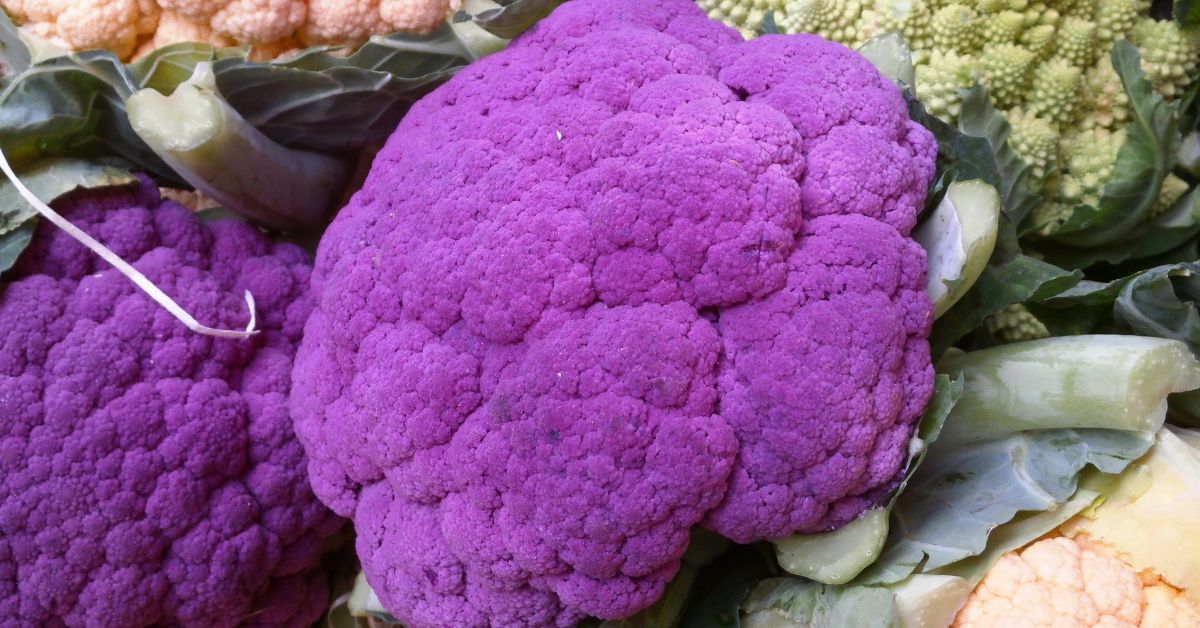
Broccolini, also known as Baby Broccoli, is a cross between Broccoli and Chinese Kale. It is sweeter than broccoli with a slightly bitter bite. It has thinner stalks that are much more tender and smaller florets than regular broccoli. It makes for an appealing presentation. Also called Aspiration and Tender Stem. First, blanch it quickly, then sauté in garlic and olive oil.
Chinese broccoli, also known as Chinese Sprouting Broccoli, Chinese Kale, Gai Lum, Gailon, and Gaia Lan, has smaller florets than regular broccoli and long thin stalks. May also have white flowers. This is a tasty green that is quick to prepare! Try Chinese Broccoli with Oyster Sauce.
Broccoli Raab or Rapini is not related to broccoli at all and is instead associated with Turnips. It is a leafy green with little broccoli-like florets. A delicious side dish and easy to prepare. Prepare as you would any leafy green (sauté onions or not in coconut or olive oil, add garlic, add chopped up green.) It cooks in 5 minutes or less and has a not too bitter nice bite to it. Nice with a squeeze of lemon at the end.
Broccoli Facts:
Nutritionally: In every sense of the word, broccoli is a miraculous vegetable. Broccoli has just 25 calories and is an excellent source of vitamin A, folic acid (which is particularly vital for women who are pregnant), calcium, potassium, vitamin C (ounce for ounce, more vitamin C than an orange!), and beta-carotene. Broccoli is also a strong source of beta-carotene (an antioxidant).
It has a high concentration of antioxidants. It also includes the phytochemical sulforaphane, which is a natural chemical that encourages the body to manufacture enzymes that eliminate carcinogens and, as a result, may help decrease the risk of cancer.
Sulforaphane is found in broccoli, cabbage, and cauliflower. Johns Hopkins University study showed that broccoli is more effective than antibiotics for peptic ulcers and stomach cancer. This is a cruciferous vegetable.
How to choose: Look for nice dark green or blue-ish green tight florets. Younger (smaller) ones are generally more tender. Stalks should be crisp.
How to store: Put them in a perforated plastic bag in your vegetable drawer but keep it away from Apples and Avocadoes (ethylene-producing fruits).
Fun Fact: The leaves pack an even more nutritious punch than the florets, so use them too. The stalks should be tender if young, so there is no need to peel them. This preserves even more nutrition. Old broccoli has a nasty cabbagey smell.
Broccoli means “little sprouts” in Italian. It has the same amount of calcium as a glass of milk and more vitamin C than an orange does, ounce for ounce. In addition to having a higher concentration of fiber than a piece of wheat bran bread, it is also one of the top sources of vitamin A.
2. Cauliflower

Actually a member of the cabbage family, so this can be listed under the “Greens” section. Cauliflower can be eaten raw as in salads or appetizers. It can be cooked and eaten warm or cooled. It is also possible to pickle it or use it in relishes or chutneys, and it may be used in dishes like stews, soups, and soufflés.
Cauliflower and broccoli may very much be substituted for one another in any context, including recipes. It should be prepared in the same manner as broccoli. Because of their subtle taste, they are well-suited for being complemented by bolder flavors, such as those found in Indian Curry Curried Carrot and Cauliflower Soup or Curried Indian Potato and Cauliflower. Create an imitation of mashed potatoes or pureed cauliflower using the cauliflower.
Green Cauliflower, or Green-Headed Cauliflower, is also known as a Broccoflower and is a cross of the two, as the name implies, in both flavor and texture and is, therefore, milder than White Cauliflower. It looks like a green Cauliflower whose tastes lean toward Cauliflower but tend to be sweeter and whose texture is more like broccoli.
Cauliflower in its purple form is rare and more beneficial to our health. Anthocyanins, which are a kind of antioxidant and may also be found in red cabbage and red wine, are the pigments responsible for the hue. It is delicious when eaten raw, but you may also steam it slightly for another option.
Add some lemon juice or vinegar to the water to prevent the color from fading. If you cook it excessively, it will turn green, but if you cook it for the appropriate amount of time, it will remain purple! When added to rice, this will turn the rice a beautiful shade of lavender. It has a more delicate flavor than white and requires less time in the oven.
Romanesco Cauliflower has a striking appearance! It looks like something from another planet with lime green pointy florets. Imagine lime green sea shells tightly snug next to one another. When you cut it apart, the florets become their own little light green Evergreen trees.
Always smaller heads and lighter in weight than the traditional Cauliflower. This heirloom variety of Cauliflower is harvested only briefly each year (from September through November). The fun shape and pretty lime green color make it a winner for kids and adults! The color does hold well, but you could add lemon juice to the water when you steam it to help set it. It is sweeter and milder than white Cauliflower. It has a lovely flavor, much like broccoflower or sweet broccoli.
Orange Cauliflower is golden in color, and when you cut it apart at the bottom of the florets, it has a peachy orange color. If you’ve never said the word “delicious” and “cauliflower” in the same sentence, you have not tried orange cauliflower.
Even kids love it – to me, it tastes like corn on the cob! Absolutely delicious! Milder and sweeter than the white, with added antioxidants and vitamins – this Cauliflower has 25% more Vitamin A! Richer in beta carotene than the pale cousin, with all the other nutritional benefits. More about orange Cauliflower
Yellow Cauliflower is milder than white and absolutely beautiful! Not quite as flavorful as orange, but still delicious. Use as a striking contrast with purple for a spectacular presentation!
Cauliflower Facts:
Nutritionally: Being 92% water, Cauliflower is low in calories and is a good source of potassium, vitamin C, and riboflavin. It also has vitamin B6, folic acid and niacin. This is a cruciferous vegetable.
How to choose: Nice overall color with a tight compact floret, no spots or brown dots is best, and crisp fresh surrounding leaves.
How to store: It can be stored for up to 10 days in the crisper drawer in a perforated plastic bag but keep it away from Apples and Avocadoes (ethylene-producing fruits).
Fun Facts: The leaves around the Cauliflower can be cooked and eaten just like cabbage and are quite nutritious.
Recipes:
Purple Cauliflower Soup
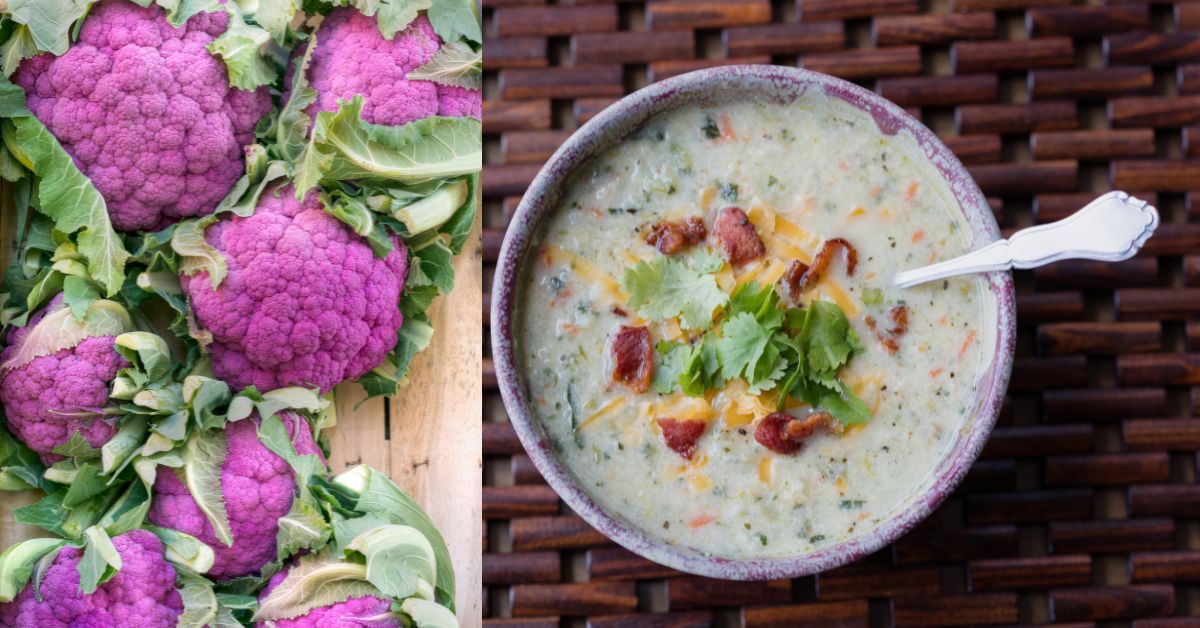
Sauté onions in a little olive and garlic; add the cauliflower florets and sauté. The color will become more vibrant. You may want to gently steam them in a little water with lemon juice if they are not tender. After about 5 minutes, remove the Cauliflower and add 3 or so Purple Potatoes and chicken stock.
Simmer until the potatoes are tender. Add salt and pepper to taste. Return the Cauliflower and blend it all together. I like using a handheld blender. Your kids and guests won’t believe it!
Roasted Cauliflower
If you are unsure about whether or not you enjoy cauliflower, Beth advises that you try roasting the florets by first coating them in olive oil, then sprinkling them with kosher salt, and then broiling them at a temperature of 425 degrees until they begin to brown. I double-dog dare you to make it to the table with everything still in place! When I’m done, I’ll be able to devour everything on the platter!
Cruciferous Leafy Greens
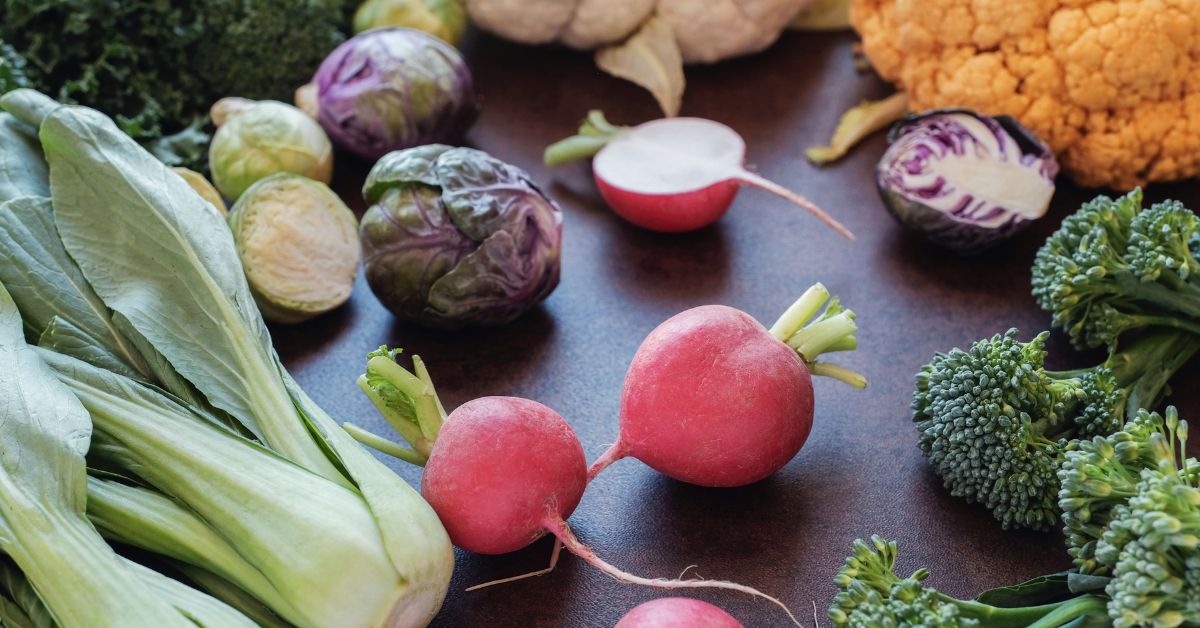
3. Arugula
Also spelled Arugula, it makes a delicious salad and is also fun in a pesto added to pasta. This is a tender green that yet has some of its crispness. Often referred to as Rocket Salad due to the peppery flavor it imparts, but don’t let that put you off. Consume it either raw or cooked.
Delicious when prepared as a salad, particularly with crisp baby arugula and a dash of olive oil and balsamic vinegar. You should try a salad made with beets and arugula. You might also purchase some pears and try out this salad made with arugula, pears, and blue cheese. In a salad, you may combine it with strawberries or red peppers. Create a sauce with arugula that is similar to creamed spinach. This is a vegetable of the cruciferous family.
4. Bok Choy
Mild, tender, and crisp. Look for clean, crisp white stalks and beautiful green leaves. Add it to your stir fry or soups (at the end because it doesn’t need much time to cook); baby Bok Choy can be grilled, braised, or steamed with a drizzle of balsamic, olive oil, and, of course, salt. It can be used for a fun slaw, but Napa is better.
5. Choy Sum
Choy Sum is a flowering Bok Choy that looks different from regular Bok Choy and is revered for its flavor (it costs more, too) in China. Baby Bok Choy is more tender and flavorful and can be served whole or cut in half, while regular Bok Choy is normally chopped up. This is a cruciferous vegetable.
6. Brussels Sprouts
Brussels Sprouts look like mini-cabbages. Some people have an aversion to Brussels Sprouts, but if prepared properly, they are quite delicious. Sweeter than traditional cabbage is a fantastic source of Vitamins K, C, and A as well as folic acid, B6, and fiber. Mix steam with a little butter and garlic, or separate the leaves and sauté. This is a cruciferous vegetable.
7. Cabbage
Cabbage is a staple in many cuisines. Red is sweeter and more appealing than green, but the color will bleed onto other foods. Red also contains the same super antioxidants that are in blueberries, so the color is worth it.
It can be eaten raw, juiced, or cooked. Shred raw in slaw and salads. Blanch and use leave whole as a wrap (to make stuffed cabbage which is then cooked low and slow in tomato sauce) for meats or veggies. You may sauté it, stir-fry it, braise it, or add it to soups and stews. Cabbage is quite versatile. You may pickle cabbage in the same way that sauerkraut is made.
It pairs nicely with potatoes – the Irish have a wonderful dish called Colcannon with Cabbage and Potatoes.
Try sautéing with apples for a nice side dish!
They should be weighty for their size and compact, with uniform coloring and no browning or brown spots, and they should be fresh without any browning or browning spots. It only takes around five minutes to cook the cabbage, depending on how large you chop it, but be sure not to overcook it unless you are using the leaves for stuffed cabbage, in which case you should. When it’s done, it should have a sensitive crunch. This is a vegetable of the cruciferous family.
8. Collard Greens
It is more nutritious than cabbage and common in Southern cooking, where it is simmered with salt pork or a ham hock. The best choices are small and firm. If the stalks are too tough, remove them.
After sautéing onions and garlic, then you can either sauté like Spinach or simmer them slowly (for 30 minutes) in broth or water until they become tender. Season with a kick with spices like ginger, curry, or hot peppers. Add a splash of vinegar. Collards are absolutely delicious (and sweet) when cooked low and slow! A cruciferous vegetable.
9. Kale
Kale is a super vegetable that can be juiced, added to salads raw, or cooked. It comes in Red, Green, and Lacinato, also called Dinosaur Kale, because of its prehistoric look. Many times red and green kale is used only as a garnish since it has curly leaves and can be quite decorative, but this vegetable deserves more attention than that. Add to salads.
Steam, blanch, braise and sauté, stir fry, or add to soups or sauces. Make creamed kale like Creamed Spinach, but you’ll need to blanch it first. Or sauté with Red Peppers and Spinach in a warm salad. If the stems are too tough, discard those. Many serve this mixed with sautéed bacon and onions or mix it with potatoes. There is a Portuguese soup with sausage, Kale and Potatoes called Caldo Verde. Very nutritious. This is a cruciferous vegetable.
10. Kohlrabi
Kohlrabi – “cabbage turnip” resembles a turnip with leaves. It comes in white, green, and purple colors, so it is a nice colorful addition to a meal. It is mild, sweet, and flavorful. Like Beets, the root and the leaves can be eaten separately. Steam the bulbs or sauté them with another green. Eat the greens in salads or cook the leaves like Spinach; only you’ll need to cover and simmer for 7 minutes until tender. This is a cruciferous vegetable.
11. Mizuna
Mizuna, also called Japanese Mustard Green or Xiu Cai, is a nice green for salads because of its pretty jagged edges (like Dandelion Greens but not as bitter) and is often found in bagged salads, both Asian mix and mesclun mix. It can also be quickly sautéed or added at the end to soups.
12. Mustard Greens
Mustard Greens – adds a nice “bite” to your salad or other greens and a nice look too. It can be slow cooked or blanched to remove some of the bitterness and then sautéed or added to soups. Most often cooked with ham, salt pork, and/or a splash of vinegar. This is a cruciferous vegetable.
13. Napa
Napa or Chinese Cabbage – mild and delicate, white to light green leaves resembling Romaine. Add it to your stir fry or cook another way or use it to make an interesting slaw or salad. Perfect for a Chinese Chicken Salad – add some orange slices, nuts, and a light dressing. This is a cruciferous vegetable.
14. Tatsoi
Tatsoi is a delicious Asian green that is easy to prepare, just a minute sauté or delicious in a salad. Found in Asian blend bagged salads.
15. Turnip Greens
Turnip Greens – having a definite bite, they should be simmered in broth for a long time to remove the bitterness. Traditionally cooked with salt pork or ham hock for an hour but maybe cooking them with smoked turkey appeals to you more; maybe, healthy smothered Greens may be your thing.
You can also mix Turnip Greens with Collard and Mustard Greens and sauté with onions and bacon, then simmer in water for over an hour until tender; add a splash of vinegar or hot sauce. This is a cruciferous vegetable.
16. Watercress
Watercress – pretty and flavorful. Perfect addition to your salad with a peppery bite. It can also be used in soups, sauces, or stir-fries. This is a cruciferous vegetable.
Cruciferous Roots
17. Radishes
Radishes are great as a tasty snack with a lovely contrasting color, sharp peppery flavor, and crunchy texture. It can be eaten raw, added to your salad, or served with cheese in a sandwich. Try them by themselves with olive oil or serve with beautiful gourmet salt. The French eat them for breakfast with salt, bread, and butter.
They can also be pickled. Most people think of radishes only as raw in salads, but they are quite delicious and less of a bite when cooked. Add to soups, roast, sauté as a side, or add to a stir-fry. They also can be used to make nice decorations for your plate!
The greens can be eaten and are quite nutritious but are a little fuzzy, so many just tosses those. Link here for more Radishes.
Daikon Radish is popular in the Orient and in Macrobiotic cooking. It is crisp and juicy in texture, and the flavor is mild. It is quite versatile and can be cooked, pickled, or used raw. Traditional in Macrobiotic or Ayurvedic cuisine, the Daikon Radish is a cleansing vegetable that fortifies the liver and enhances digestion.
Daikon radishes are milder than other radishes and are great for adding raw shredded salads. Cooking makes the radish bite even milder. They can also be roasted, sauteed, added to stir-fries, grilled, steamed, baked, or added to soups. Daikons are rich in Vitamin C, potassium, folate, and magnesium. Greens also contain calcium, iron, and beta-carotene and can be sauteed or added to soups or added to salads raw.
18. Rutabagas
Rutabagas are like overgrown turnips but are yellow inside, while the Turnip is white. They can be added to roasts, soups, and stews. They are deliciously roasted as a side dish with other root vegetables. Once roasted, they have an al dente texture and are even sweeter. Ours come without the waxy coating common to conventional rutabagas!
19. Kohlrabi
Kohlrabi roots are a delicious addition to a slaw salad. Perfect on a crudités platter. Simply peel and slice. They are addictive with a slightly juicy, tart, bitter, and sweet flavor. Imagine a green apple meets a lovely radish. It can also be roasted, added to stews, braised, steamed, or added to your stir fry. Come in green and purple; the green color is milder. Greens are also nutritious.
20. Cut turnips
Cut turnips may be added to soups or used to make stock, or they can be chunked up and roasted at a temperature of 425 degrees for about 40 minutes until they are soft and starting to brown. You may also boil or steam them and then mash the cooked product as you would a potato.
Simply purée them in a food processor with some butter, milk, or broth, along with some salt and pepper, and they make an excellent substitute for mashed potatoes. When roasted, the outside of these becomes caramelized, but the inside remains silky smooth and creamy.
Horseradish and Wasabi also are fierce cruciferous family members! So indulge in a little heat with these two.
FAQ
Why are they called cruciferous vegetables?
The cabbage family includes a great number of familiar vegetable species (genus Brassica). Cruciferous vegetables are the collective name given to the edible members of this family. This is due to the fact that each of its four-petaled blossoms resembles a crucifer, which is another word for a cross.
Does broccoli cause gas?
Yes. It is well known that eating certain vegetables, such as Brussels sprouts, cabbage, broccoli, asparagus, and cauliflower, may increase gas. Raffinose is another kind of complex sugar that may be found in these veggies, much like in beans. However, given that these are the foods considered to be the healthiest available, you may want to consult with your physician before cutting them out of your diet.
How do you stop gas from eating broccoli?
Because it is considerably more difficult to digest these seemingly innocuous green florets when they are raw, it is better to sauté or softly steam broccoli before eating it. If you start by eating just a few pieces, you should find that your stomach feels better after eating just a little bit.
What do you eat on a macrobiotic diet?
The macrobiotic diet focuses on eating entire grains, locally grown locally and fresh vegetables, vegetables grown under the sea, and beans. White fish should be eaten anywhere from twice to three times a week, in addition to seasonal fruits, nuts, and seeds. You are not allowed to consume meat, dairy products, and the vast majority of other goods derived from animals, as well as several fruits, vegetables, and beverages often consumed.
What does sulforaphane do for the body?
Free radicals may be neutralized by antioxidants like sulforaphane and other phytochemicals found in plants. Free radicals are very small particles that may deteriorate and harm healthy cells. They may develop in your body as a result of environmental factors such as pollution and UV radiation, as well as dietary additives and preservatives, and even naturally occurring processes such as digestion. It has an anti-inflammatory effect.
